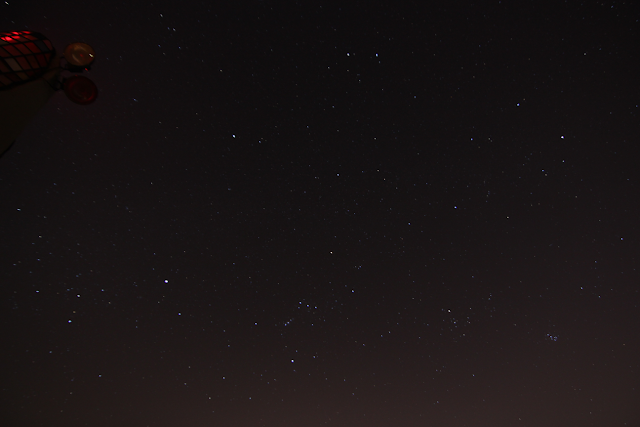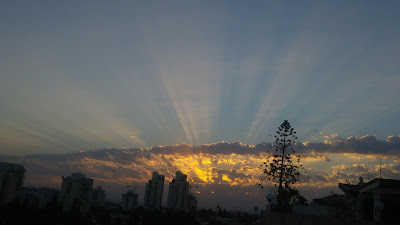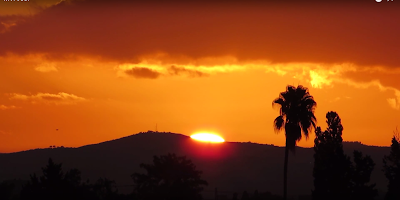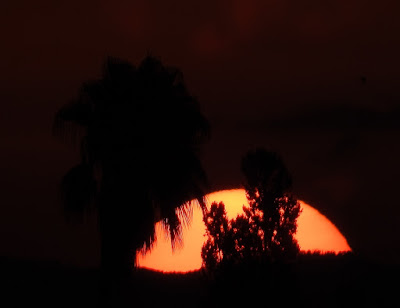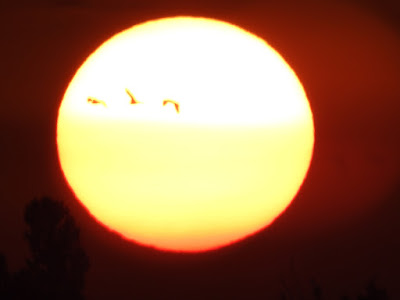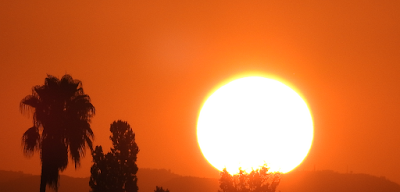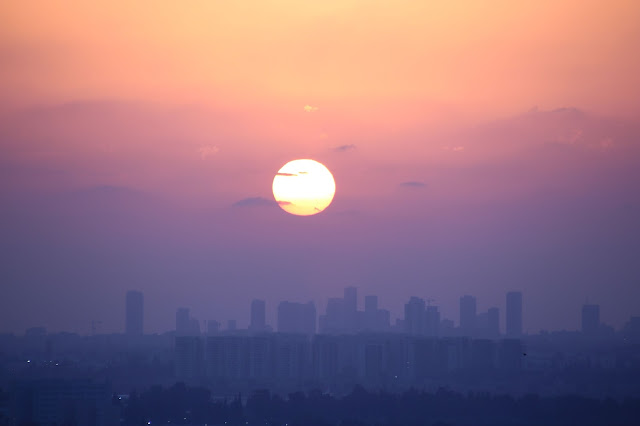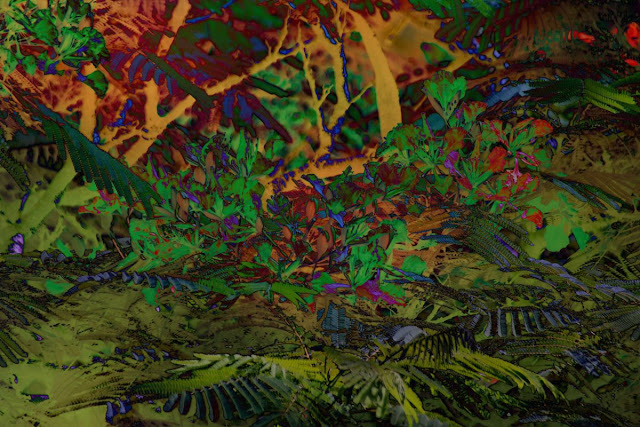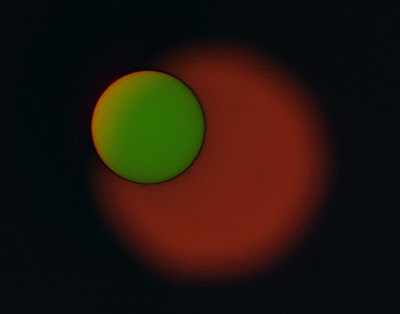From time to time, you hear news about a big and bright moon that has not been seen in the last ten, twenty, or even a hundred years. Such moons have the nickname, "supermoon". Here are some facts and information about supermoons. All numbers and times relate to the supermoon of November 14,2016.
What is a supermoon?
A supermoon is a term for a full moon that is near perigee. The perigee is the point in the moon's orbit that is closest to earth. The moon is full once a month and also at perigee once a month. From time to time, the moon is both full and near perigee around the same time and the result is a somewhat larger and brighter moon, a.k.a. "supermoon".
What will be the distance to the current supermoon?
The closest distance to the moon varies each month and averages around 357,000 kilometers. The earth's distance from the current supermoon will be 356,511 kilometers (227,118 miles). This distance is the distance between the earth's and moon's centers. The exact times (UTC) are:
- Moon at Perigee 13:24
- Full Moon 15:54
- The moonrise varies for different locations.
The difference between a distant moon ( >400,000 km) and a close moon is indeed significant and can reach 40,000 km which are 14% of the distance. This difference has an impact on the apparent size of the moon and 14% is is the number you will probably see in the news; however, I think they should calculate the difference based on the average distance of the moon, which is just half of that.
The best (and only) way to see that difference is to take two photos and compare them. See the image below for example:

The smallest distance since 1948
Headlines such as "Nearest moon since 1948" are factually correct but are meaningless. As mentioned above the distance is between the earth's and moon's centers. The distance of the moon to a specific observer on earth is different and changes throughout the night as the earth revolves.
Since 1948, there have been many others supermoons, some of them only 100 km farther than this supermoon. But if an observer on earth sees the moon before or after the exact perigee, this 100 km is negligible to the change due to earth's rotation (which is 6300 km about the same as earth's radii, in just a few hours). Such small changes of 0.1% have no effect on the moon's apparent size. It might be that for a given observer in a given location, there was a nearer moon after 1948.
Why is the moon orange or particularly large when it rises?
The red rising moon is due to the atmosphere and the big rising moon is an illusion. Read more about the large red moon here. Both phenomena are not related to the moon being a supermoon.
Will I see any difference in the size of the moon?
Probably not. If you go out and look at the full moon you, will see that it is very bright. Maybe you'll notice it is brighter than the previous evening's moon, but that is true for every full moon. To see a change in the moon's size, you will have to compare the moon to something. To what? It is more or less the same as the day before and certainly one can't recall how a very far away moon looked several months ago. If you want to compare the difference in the size of the apparent moon, you need patience. Take some pictures, wait patiently for seven months (When then the full moon will be distant) and then take more photos.
What about the brightness of the moon?
The brightness of the moon is a whole new ball game. The moon's apparent size depends only on its distance, but the brightness depends on other factors as well. So if the news reports about the distance are at least credible to some extent, the reports on the brightness are almost always completely wrong.
Explanation:
The two most obvious factors that affect the brightness of the moon are the moon's distance from the earth and also the earth's distance from the sun. As the two of them are the smallest possible, the brightness increases. The earth is close to the sun at the beginning of January, which is part of the reasons why this November's supermoon arrived the news.
Are there more important factors to the brightness of the moon?
Yes, there are more, and the most important of is the phase angle, which relates to the distance of the moon (in degrees) from the ecliptic. The farther the moon, the less bright it will be. For the current supermoon, the moon is more than 5 degrees from the ecliptic so it will not be so bright after all.
When will the moon be the brightest?
Suppose we have a full moon at perigee (closest to earth), we assume that the earth is at perihelion (closest to the sun), and we assume that it is also just on the ecliptic. In this situation, the moon would be at its brightest. But under these conditions, we would be in the middle of a very deep lunar eclipse, which is a great event to observe, but the moon is not seen at all. For this reason, the moon has a theoretical maximum brightness limit, but that limit can never be observed.
When will be the brightest moon that can be observed?
Think again about the conditions in the previous section. The only compromise that can be done is that the moon will not be full, but just a little before or after (a difference of few hours) which means that the moon is as close as possible to earth, the earth is as close as possible to the sun, and the moon is almost full. This is just before or after a full lunar eclipse.
When is the next lunar eclipse with these conditions?
The last supermoon eclipse was January 9,2001, and the next time will be an eclipse on December 12, 2114. The brightest supermoon between 1800-2200 will be on January 3, 2151, when the earth is almost at perihelion. These dates are from the book, "More Astronomical Morsels" by Jean Meeus.
So what is all the fuss about?
As usual, much ado about nothing. But if such news will make people go out and observe the moon, so be it. The full moon and especially the rising of the moon are always an experience. Take a look for yourself in the video attached!
What other things you recommend we observe?
The moon is always interesting to observe. Even a small pair of binoculars will show many details on its surface, which change daily depending on the phase of the moon. Eclipses are always interesting, and conjunctions of the moon and planets or bright stars are interesting. Actually, one day after this supermoon, on November 15, 20161, the moon will cover the star Aldebaran in Taurus. This occultation will be visible to observers in Southeast Asia.
More questions?
Write them in the comments and I'll be happy to answer!
Why is the moon orange or particularly large when it rises?
The red rising moon is due to the atmosphere and the big rising moon is an illusion. Read more about the large red moon here. Both phenomena are not related to the moon being a supermoon.
Will I see any difference in the size of the moon?
Probably not. If you go out and look at the full moon you, will see that it is very bright. Maybe you'll notice it is brighter than the previous evening's moon, but that is true for every full moon. To see a change in the moon's size, you will have to compare the moon to something. To what? It is more or less the same as the day before and certainly one can't recall how a very far away moon looked several months ago. If you want to compare the difference in the size of the apparent moon, you need patience. Take some pictures, wait patiently for seven months (When then the full moon will be distant) and then take more photos.
What about the brightness of the moon?
The brightness of the moon is a whole new ball game. The moon's apparent size depends only on its distance, but the brightness depends on other factors as well. So if the news reports about the distance are at least credible to some extent, the reports on the brightness are almost always completely wrong.
Explanation:
The two most obvious factors that affect the brightness of the moon are the moon's distance from the earth and also the earth's distance from the sun. As the two of them are the smallest possible, the brightness increases. The earth is close to the sun at the beginning of January, which is part of the reasons why this November's supermoon arrived the news.
Are there more important factors to the brightness of the moon?
Yes, there are more, and the most important of is the phase angle, which relates to the distance of the moon (in degrees) from the ecliptic. The farther the moon, the less bright it will be. For the current supermoon, the moon is more than 5 degrees from the ecliptic so it will not be so bright after all.
When will the moon be the brightest?
Suppose we have a full moon at perigee (closest to earth), we assume that the earth is at perihelion (closest to the sun), and we assume that it is also just on the ecliptic. In this situation, the moon would be at its brightest. But under these conditions, we would be in the middle of a very deep lunar eclipse, which is a great event to observe, but the moon is not seen at all. For this reason, the moon has a theoretical maximum brightness limit, but that limit can never be observed.
When will be the brightest moon that can be observed?
Think again about the conditions in the previous section. The only compromise that can be done is that the moon will not be full, but just a little before or after (a difference of few hours) which means that the moon is as close as possible to earth, the earth is as close as possible to the sun, and the moon is almost full. This is just before or after a full lunar eclipse.
When is the next lunar eclipse with these conditions?
The last supermoon eclipse was January 9,2001, and the next time will be an eclipse on December 12, 2114. The brightest supermoon between 1800-2200 will be on January 3, 2151, when the earth is almost at perihelion. These dates are from the book, "More Astronomical Morsels" by Jean Meeus.
So what is all the fuss about?
As usual, much ado about nothing. But if such news will make people go out and observe the moon, so be it. The full moon and especially the rising of the moon are always an experience. Take a look for yourself in the video attached!
What other things you recommend we observe?
The moon is always interesting to observe. Even a small pair of binoculars will show many details on its surface, which change daily depending on the phase of the moon. Eclipses are always interesting, and conjunctions of the moon and planets or bright stars are interesting. Actually, one day after this supermoon, on November 15, 20161, the moon will cover the star Aldebaran in Taurus. This occultation will be visible to observers in Southeast Asia.
More questions?
Write them in the comments and I'll be happy to answer!

